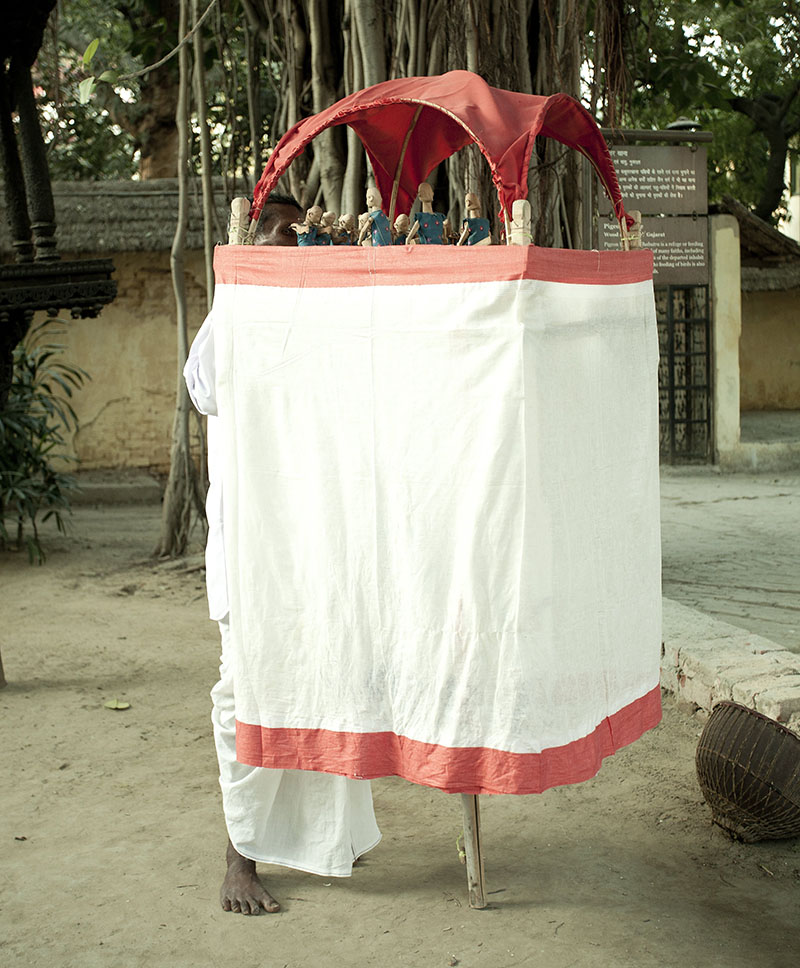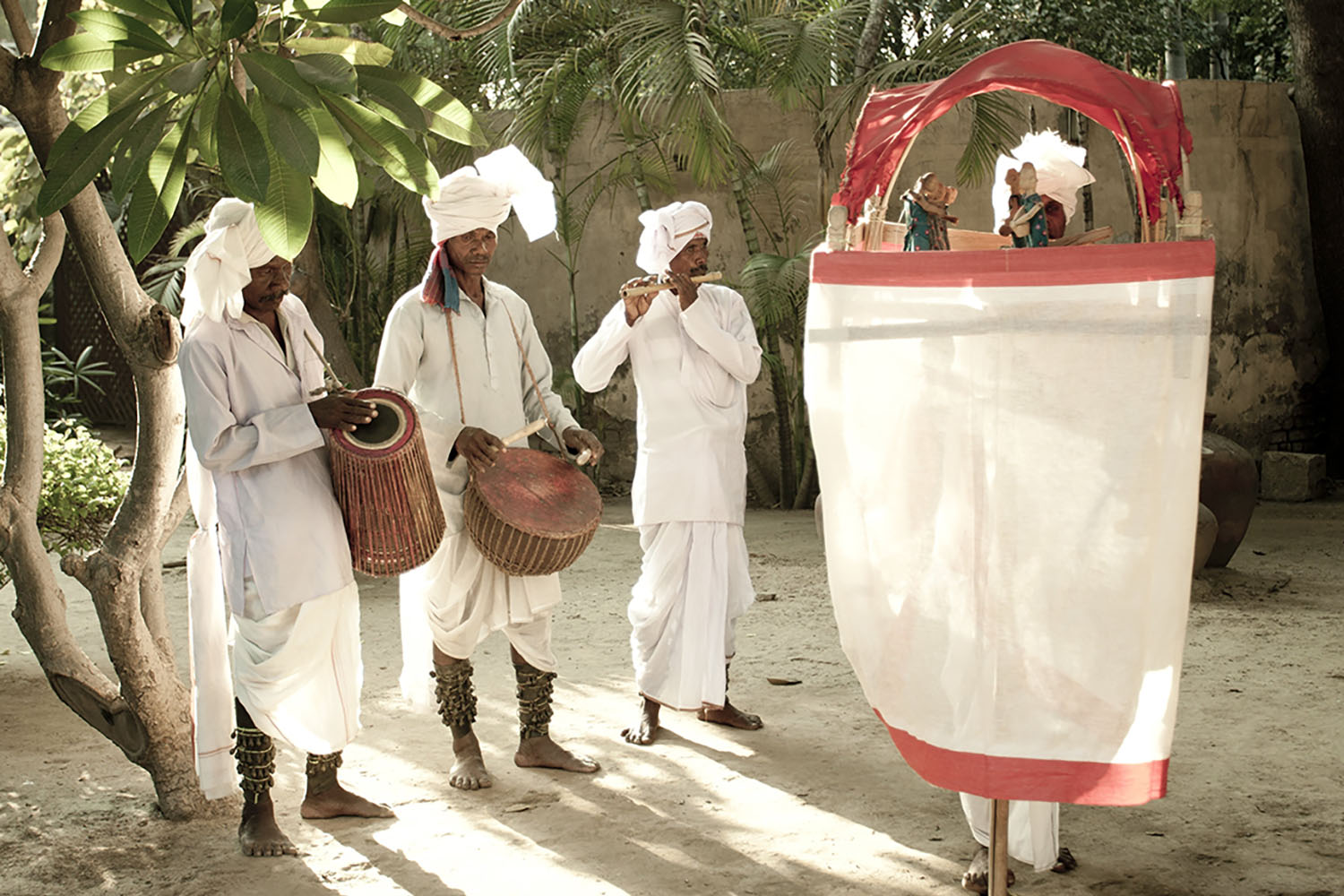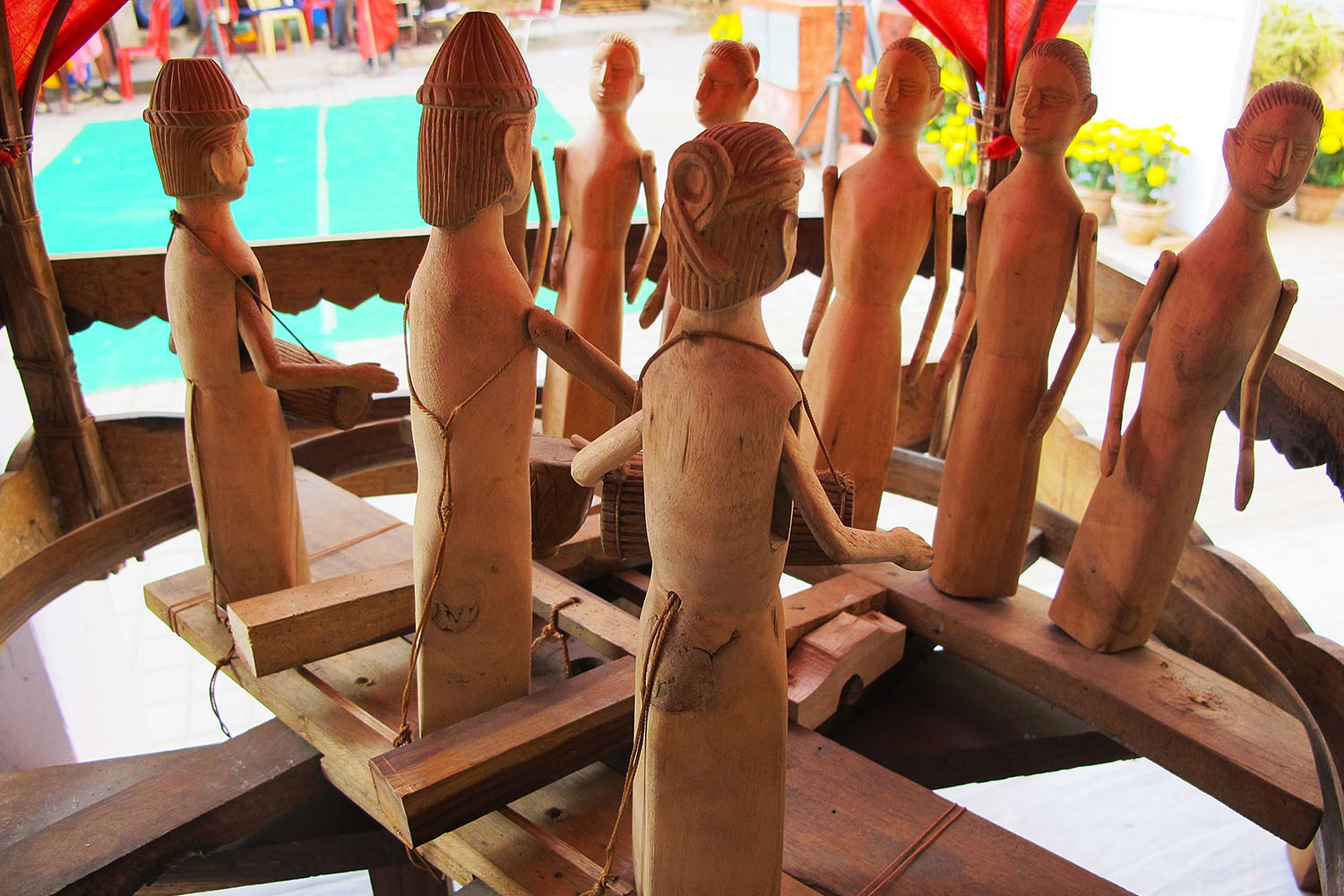ARTICLE
Chadar Badar
A puppeteer is usually accompanied by musicians playing the traditional instruments of banam (a bowed, stringed instrument with a resonator), tirenya (a flute), and madhol. Performances are usually held during festivals such as Durga Puja, with puppeteers travelling from village to village. According to anthropologists, the repertory of chadar badar draws from Santhali culture as well as other cultures the puppeteers encounter on their travels. Historically, puppetry has also been an important tool of social education among the Santhals.
Requiring a high degree of craftsmanship, the practice of chadar bahar has declined over time and there are few remaining puppeteers today. Among these, the most well-known are Sukan Mardi and Daman Murmu. Since the 1980s, artist and ethnographer Ravi Kant Dwivedi has been working to document and preserve chadar badar, in addition to organising training programmes for younger members of the Santhal community.
Bibliography
Our website is currently undergoing maintenance and re-design, due to which we have had to take down some of our bibliographies. While these will be re-published shortly, you can request references for specific articles by writing to hellomapacademy@map-india.org.









